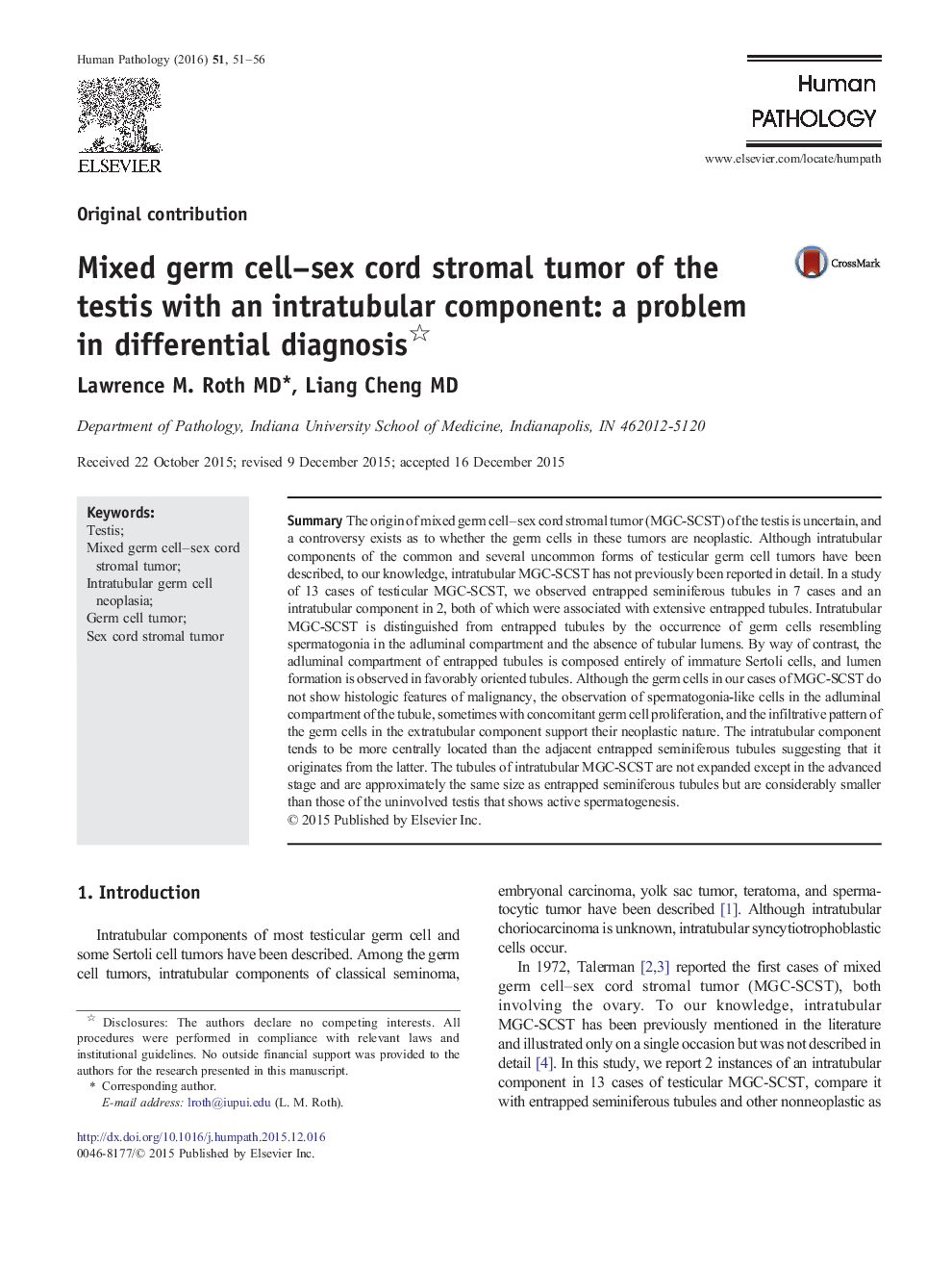| Article ID | Journal | Published Year | Pages | File Type |
|---|---|---|---|---|
| 4132435 | Human Pathology | 2016 | 6 Pages |
SummaryThe origin of mixed germ cell–sex cord stromal tumor (MGC-SCST) of the testis is uncertain, and a controversy exists as to whether the germ cells in these tumors are neoplastic. Although intratubular components of the common and several uncommon forms of testicular germ cell tumors have been described, to our knowledge, intratubular MGC-SCST has not previously been reported in detail. In a study of 13 cases of testicular MGC-SCST, we observed entrapped seminiferous tubules in 7 cases and an intratubular component in 2, both of which were associated with extensive entrapped tubules. Intratubular MGC-SCST is distinguished from entrapped tubules by the occurrence of germ cells resembling spermatogonia in the adluminal compartment and the absence of tubular lumens. By way of contrast, the adluminal compartment of entrapped tubules is composed entirely of immature Sertoli cells, and lumen formation is observed in favorably oriented tubules. Although the germ cells in our cases of MGC-SCST do not show histologic features of malignancy, the observation of spermatogonia-like cells in the adluminal compartment of the tubule, sometimes with concomitant germ cell proliferation, and the infiltrative pattern of the germ cells in the extratubular component support their neoplastic nature. The intratubular component tends to be more centrally located than the adjacent entrapped seminiferous tubules suggesting that it originates from the latter. The tubules of intratubular MGC-SCST are not expanded except in the advanced stage and are approximately the same size as entrapped seminiferous tubules but are considerably smaller than those of the uninvolved testis that shows active spermatogenesis.
